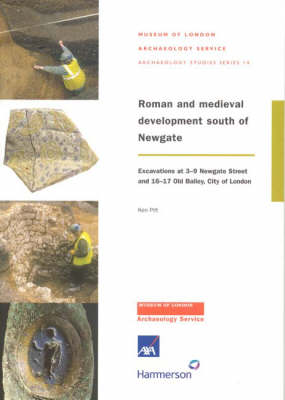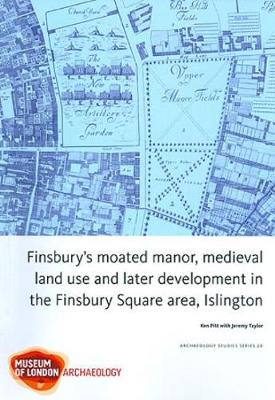MoLAS Archaeology Studies
2 primary works
Book 14
Important new evidence of Londons 2nd-century AD Roman pottery industry has been found along the western side of a tributary of the Walbrook stream. Up to eight kilns, producing Verulamium region white ware, and a probable potters workshop represent two phases of production. The findings indicate that much of the pottery thought to have been produced outside the settlement may come from these kilns. Pottery production went into decline in the second half of the 2nd century AD, though residual evidence was found of nearby glass working and other industries. Later Roman and medieval activity was largely truncated by modern basements.
Book 20
Finsbury's Moated Manor House, medieval land use and later development in the Moorfields area, Islington
by Ken Pitt, Jez Taylor, and Jeremy Taylor
Published 14 March 2009
Archaeological investigations at seven sites within the Finsbury Square area have revealed important evidence for the medieval and post-medieval development of this former marshy area north of the city walls.
At 127-139 Finsbury Pavement, quarry pits may relate to the development of the 12th- to early 13th-century Finsbury manor house, documented from 1272. Features identified within the manor include a gravel courtyard and the fragmentary remains of a building with masonry foundations. A moat existed to the east of the manor house by the 14th/15th centuries, but was backfilled by the end of the 17th century and then built over.
Beyond the manor, widespread quarrying and brick manufacturing occurred during the later 15th century. At 27-30 Finsbury Square, large quantities of leather waste may have been dumped in the 15th and 16th centuries from nearby workshops. Quarrying continued on several sites into the late 16th century. A gravel surface and a boundary wall at the Honourable Artillery Company site represent the enclosure of the area to the north of the manor as the New Artillery Ground in the 1640s. A brick flue and a saw pit at 25-32 Chiswell Street reflect the increasingly industrial nature of the area to the west of the New Artillery Ground during the 18th and 19th centuries which is indicated on contempoary maps.
At 127-139 Finsbury Pavement, quarry pits may relate to the development of the 12th- to early 13th-century Finsbury manor house, documented from 1272. Features identified within the manor include a gravel courtyard and the fragmentary remains of a building with masonry foundations. A moat existed to the east of the manor house by the 14th/15th centuries, but was backfilled by the end of the 17th century and then built over.
Beyond the manor, widespread quarrying and brick manufacturing occurred during the later 15th century. At 27-30 Finsbury Square, large quantities of leather waste may have been dumped in the 15th and 16th centuries from nearby workshops. Quarrying continued on several sites into the late 16th century. A gravel surface and a boundary wall at the Honourable Artillery Company site represent the enclosure of the area to the north of the manor as the New Artillery Ground in the 1640s. A brick flue and a saw pit at 25-32 Chiswell Street reflect the increasingly industrial nature of the area to the west of the New Artillery Ground during the 18th and 19th centuries which is indicated on contempoary maps.

